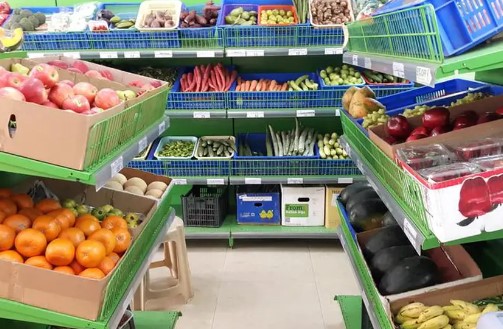A recent survey conducted by LocalCircles, a community social media platform, sheds light on the significant impact of escalating food prices on consumers, particularly in the vegetable market. The survey findings indicate that a substantial 60% of respondents are allocating over half of their weekly budget towards purchasing vegetables, marking a notable increase compared to previous months.
According to the survey results, nearly 71% of consumers reported paying Rs 50/kg or more for tomatoes, with 18% of respondents indicating expenditures exceeding Rs 100/kg for this essential vegetable. The shortage in the arrival of vegetables and fruits in local markets over the recent days has led to a surge in prices across various fresh farm produce, including onions, potatoes, and tomatoes – staples in most Indian households.
Tomato prices have witnessed a sharp rise, reaching Rs 80-100 per kg from Rs 45-50 a month ago. This spike has prompted state governments to intervene against hoarding practices by traders, while the central government is anticipated to release onion supplies from the buffer stock to stabilize the market. The inflationary trend extends beyond tomatoes, onions, and potatoes, with even modest vegetables like brinjal now commanding prices of Rs 110-140 per kg in certain cities, reflecting a significant escalation from early June rates.
Other vegetables such as bitter gourd, capsicum, and bottle gourd have also experienced an average price hike of 50%. Data compiled by the Consumer Affairs Ministry highlights the surge in food inflation, with retail prices of potatoes at Rs 36/kg and onions at Rs 44/kg registering a 52% and 65% increase, respectively, compared to the same period in 2023.
Despite a relatively lower average tomato price compared to the previous year, the current rate of Rs 62/kg represents almost a twofold increase from Rs 33/kg two months ago. Crisil’s food plate cost tracker reveals a 10% year-on-year rise in the cost of a home-cooked vegetarian meal, reaching a six-month high, while non-vegetarian meal expenses hit a seven-month peak.
The Reserve Bank of India has expressed ongoing concerns regarding the upward trajectory of food prices, with retail inflation based on the Consumer Price Index moderating to a one-year low of 4.75% in May. However, food inflation remains a persistent challenge, standing at 8.69% in May, slightly down from 8.70% in April.
The survey, which garnered over 41,000 responses from households across 393 districts in India, reflects the widespread impact of food inflation on consumers. With 62% male and 38% female respondents participating, the survey captured insights from various tiers, including 42% from tier 1, 25% from tier 2, and 33% from tier 3, 4, and rural districts, underscoring the broad reach of the inflationary pressures on households nationwide.
































